Coral reefs in st lucia – Embark on an underwater odyssey to the vibrant coral reefs of St. Lucia, where a kaleidoscope of colors and life forms dances in harmony. These extraordinary ecosystems are havens of biodiversity, teeming with a myriad of creatures that captivate the senses.
From the intricate coral formations to the playful schools of fish, every aspect of these reefs unveils the wonders of the marine world, making them a sanctuary for nature enthusiasts and a testament to the planet’s ecological marvels.
Introduction to Coral Reefs in St Lucia
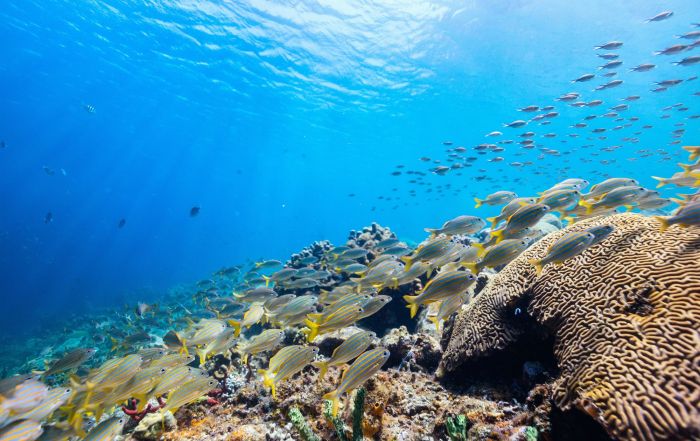
St Lucia is a Caribbean island nation renowned for its breathtaking coral reefs. Located in the heart of the Lesser Antilles, these reefs form a vibrant underwater ecosystem that supports a vast array of marine life. The reefs stretch along the west coast of the island, from the northernmost point of Cap Estate to the southernmost tip of Vieux Fort.
They are a vital part of St Lucia’s natural heritage and a major tourist attraction.The coral reefs of St Lucia are characterized by their exceptional biodiversity. They are home to over 60 species of hard corals and 350 species of fish, as well as numerous other invertebrates, algae, and plants.
The reefs provide shelter and food for a wide range of marine organisms, including endangered species such as sea turtles and manta rays.
Unique Characteristics
The coral reefs of St Lucia are unique in several ways. First, they are relatively shallow, with most of the reefs located in water less than 30 meters deep. This makes them easily accessible to snorkelers and divers, who can explore the vibrant underwater world without the need for specialized equipment.Second,
the reefs are very diverse, with a wide range of coral species and marine life. This diversity is due to the island’s location at the confluence of the Caribbean Sea and the Atlantic Ocean, which creates a unique blend of water temperatures and currents.Third,
the reefs are relatively healthy, despite the challenges posed by climate change and pollution. This is due to the efforts of the St Lucia government and local conservation organizations, which have implemented a number of measures to protect the reefs.
Types of Coral Reefs in St Lucia
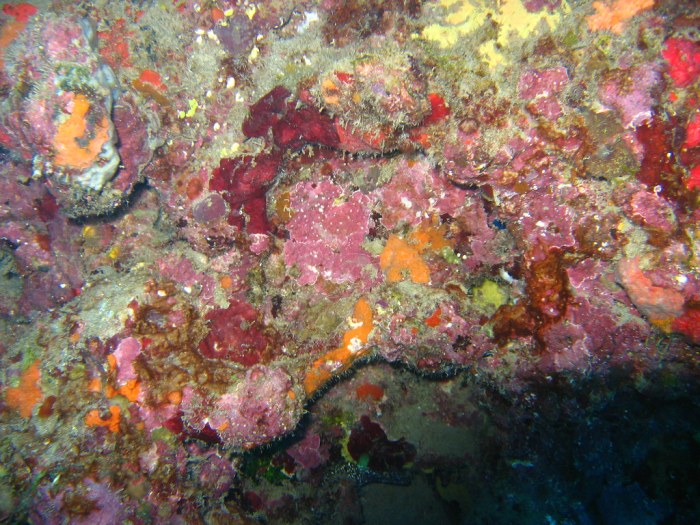
St Lucia boasts a diverse range of coral reefs, each with unique characteristics and distribution patterns.
There are three main types of coral reefs found in St Lucia:
Fringing Reefs
- Attached directly to the shoreline, forming a narrow band along the coast.
- Commonly found in sheltered bays and coves, where they provide protection from waves.
Patch Reefs
- Isolated, circular or oval-shaped reefs found in shallow waters.
- Often formed by the growth of a single coral colony or a group of colonies.
Barrier Reefs
- Long, narrow reefs that run parallel to the shoreline, separated by a lagoon.
- Protect the coastline from erosion and storm damage, while providing habitat for marine life.
Ecological Importance of Coral Reefs
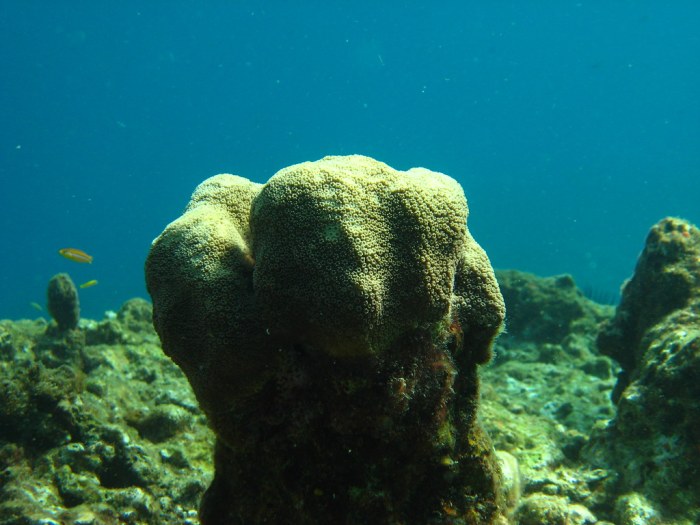
Coral reefs are vital to the marine ecosystem, providing numerous ecological benefits. They serve as breeding grounds, nurseries, and habitats for a vast array of marine life.
As breeding grounds, coral reefs offer shelter and food for fish larvae and juvenile fish. The complex structure of the reef provides hiding places from predators, allowing young fish to grow and develop before venturing into open waters. This supports the replenishment of fish populations, ensuring a sustainable marine ecosystem.
Nurseries for Marine Life
Coral reefs also act as nurseries for a variety of marine organisms, including invertebrates and mollusks. The reef provides a safe environment for these creatures to grow and reproduce, contributing to the overall biodiversity of the marine ecosystem.
Habitats for Diverse Species
The diverse habitats within coral reefs support a wide range of marine species. From the shallow, sunlit waters to the deeper, cooler areas, each zone provides unique conditions for different organisms. This diversity of habitats allows for a rich and complex ecosystem, with each species playing a specific role in the overall functioning of the reef.
Threats to Coral Reefs in St Lucia
Coral reefs in St Lucia face various threats that jeopardize their health and resilience. These threats include climate change, pollution, and overfishing.
Climate Change
Climate change poses a significant threat to coral reefs in St Lucia. Rising sea temperatures can cause coral bleaching, a process where corals expel their symbiotic algae, leading to loss of color and increased susceptibility to disease. Ocean acidification, caused by increased carbon dioxide levels in the atmosphere, makes it difficult for corals to build and maintain their skeletons.
Pollution
Pollution from various sources, including sewage, agricultural runoff, and coastal development, can harm coral reefs. Excess nutrients from fertilizers and wastewater can lead to algal blooms, which can smother corals and block sunlight. Chemicals and heavy metals from industrial and agricultural activities can also be toxic to corals.
Overfishing
Overfishing can disrupt the delicate balance of coral reef ecosystems. Fish play crucial roles in grazing on algae and controlling populations of herbivores that can damage corals. Overfishing can lead to an increase in algae, which can smother corals and reduce their ability to photosynthesize.
Conservation Efforts for Coral Reefs
Recognizing the significance of their coral reefs, St Lucia has embarked on several conservation initiatives to protect and restore these vibrant ecosystems.
Community engagement plays a crucial role in reef conservation. Local organizations and volunteers participate in reef monitoring, cleanups, and education programs to raise awareness and foster stewardship. Research institutions collaborate with local communities to study reef health, identify threats, and develop effective conservation strategies.
The vibrant coral reefs in St. Lucia offer a mesmerizing underwater world to explore. While snorkeling or diving, you’ll be captivated by the diverse marine life and colorful corals. For those interested in healthcare, there’s also the opportunity to learn about the curso de cna en espanol , a valuable program for aspiring healthcare professionals.
Returning to the coral reefs, their delicate ecosystem is a testament to the importance of conservation and sustainable tourism, ensuring that future generations can continue to appreciate their beauty.
Sustainable Practices
Sustainable practices are essential for safeguarding coral reefs. The government and tourism industry promote responsible diving and snorkeling practices, minimizing damage to the delicate ecosystem. Fishers are encouraged to adopt sustainable fishing techniques to prevent overfishing and protect reef-associated species.
Tourism and Coral Reefs

Tourism plays a pivotal role in St Lucia’s economy, accounting for approximately 65% of its GDP. Coral reefs, with their vibrant marine life and breathtaking beauty, are a major attraction for tourists. However, the influx of tourists can also pose potential threats to these fragile ecosystems.
Strategies for Sustainable Tourism
To minimize the impact of tourism on coral reefs, it is crucial to promote sustainable tourism practices. These include:
- Educating tourists about the importance of coral reefs and the need to protect them.
- Implementing mooring buoys to prevent boats from anchoring on reefs.
- Establishing designated snorkeling and diving areas to reduce damage to sensitive areas.
- Encouraging responsible diving and snorkeling practices, such as avoiding touching or removing marine life.
- Promoting the use of reef-safe sunscreens to minimize the impact of chemical pollution on reefs.
By implementing these strategies, St Lucia can continue to reap the economic benefits of tourism while protecting its valuable coral reef ecosystems for future generations.
Economic Value of Coral Reefs: Coral Reefs In St Lucia
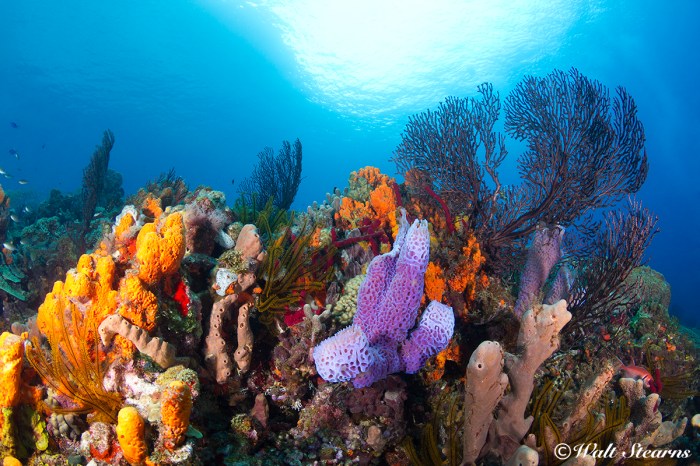
Coral reefs in St Lucia provide significant economic benefits through tourism, fisheries, and coastal protection. Their beauty and biodiversity attract tourists, generating revenue for local businesses and the government. Reefs also support a thriving fishing industry, providing food and livelihoods for coastal communities.
Additionally, they act as natural breakwaters, protecting coastlines from erosion and storm damage, reducing the need for expensive coastal infrastructure.
Tourism
St Lucia’s coral reefs are a major tourist attraction, attracting divers, snorkelers, and nature enthusiasts from around the world. The reefs offer stunning underwater experiences, showcasing a diverse array of marine life and vibrant coral formations. Tourism associated with coral reefs contributes significantly to the local economy, creating jobs in the hospitality, transportation, and recreation sectors.
Fisheries
Coral reefs are vital to the livelihoods of local fishers. They provide habitat and food for a wide range of fish species, including commercially important species such as snapper, grouper, and lobster. Reef fisheries support local food security and generate income for fishing communities.
The economic value of the fisheries sector linked to coral reefs in St Lucia is estimated to be in the millions of dollars annually.
Coastal Protection
Coral reefs act as natural breakwaters, reducing the impact of waves and currents on coastlines. This protection helps prevent erosion, protects infrastructure, and reduces the risk of flooding. The economic value of this ecosystem service is substantial, as it saves governments and property owners significant costs associated with coastal protection measures.
Valuing coral reefs for their economic contributions is crucial for sustainable development. By quantifying their benefits, decision-makers can prioritize their conservation and ensure that their economic value is considered alongside other factors when making land-use and development decisions.
Future Outlook for Coral Reefs in St Lucia
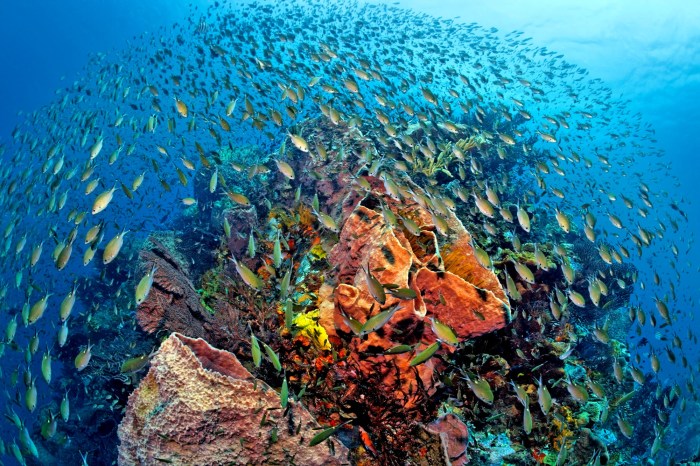
The future of coral reefs in St Lucia is uncertain, but there are both challenges and opportunities that could shape their trajectory.One of the biggest challenges is climate change, which is causing ocean temperatures to rise. Warmer waters can stress corals and make them more susceptible to disease.
Another challenge is pollution, which can damage coral reefs and the organisms that live on them.Despite these challenges, there are also opportunities to protect and restore coral reefs in St Lucia. One opportunity is to reduce greenhouse gas emissions, which will help to slow the pace of climate change.
Another opportunity is to improve water quality by reducing pollution from land-based sources.
Conservation Recommendations, Coral reefs in st lucia
There are a number of things that can be done to ensure the long-term conservation and resilience of coral reefs in St Lucia. These include:
- Reducing greenhouse gas emissions
- Improving water quality
- Establishing marine protected areas
- Restoring damaged coral reefs
- Educating the public about the importance of coral reefs
By taking these steps, we can help to ensure that future generations can enjoy the beauty and benefits of coral reefs in St Lucia.
Helpful Answers
What are the major threats facing coral reefs in St. Lucia?
Climate change, pollution, and overfishing are the primary threats to coral reefs in St. Lucia.
What can be done to protect coral reefs in St. Lucia?
Reducing carbon emissions, minimizing pollution, implementing sustainable fishing practices, and supporting conservation initiatives are crucial for safeguarding coral reefs.
What is the economic value of coral reefs in St. Lucia?
Coral reefs contribute significantly to St. Lucia’s economy through tourism, fisheries, and coastal protection.